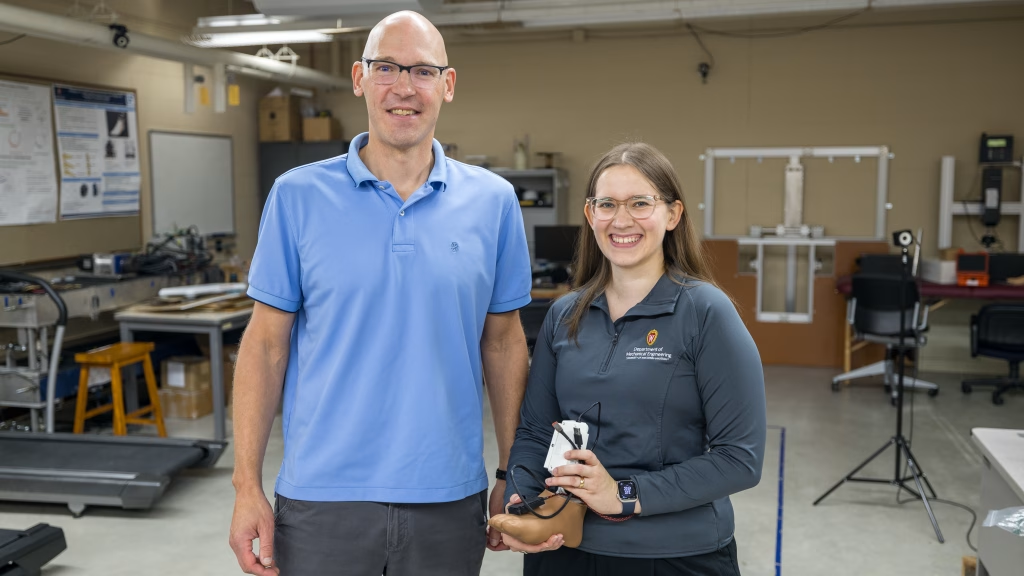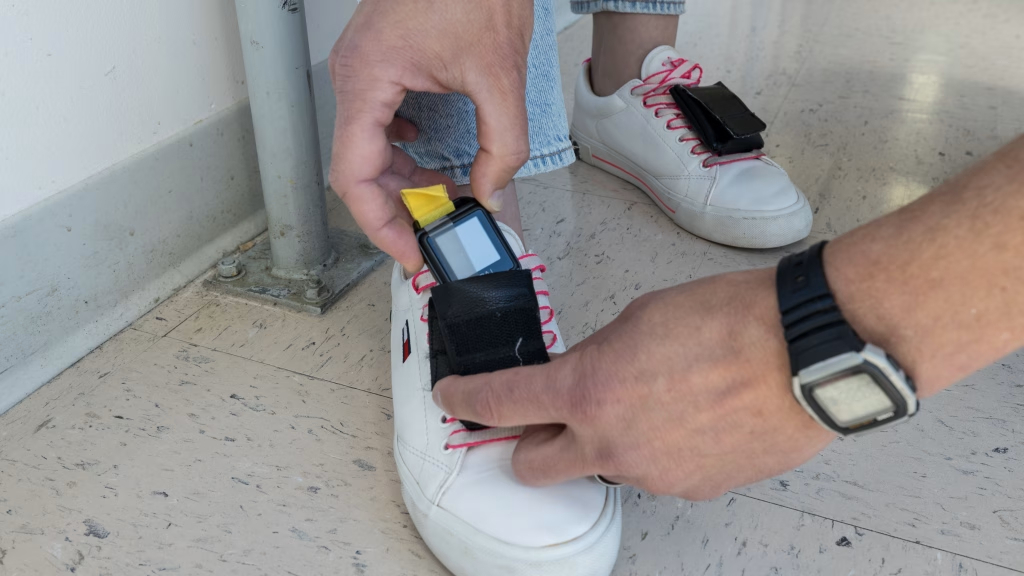Wearable devices like smartwatches and fitness bands that count a person’s steps are ubiquitous today. Using a similar type of wearable sensor, University of Wisconsin-Madison engineers have developed a new method that goes beyond step counts: It allows researchers to see how a person walks in daily life.
“This is important for understanding how people with different abilities move in their everyday lives,” says Katherine Heidi Fehr, a mechanical engineering graduate student at UW-Madison. “We can use our method to visualize and measure how different assistive devices and prostheses change how people walk and how the devices might affect their risk of tripping.”
Currently, gait analyses are conducted in controlled lab settings where researchers use expensive equipment to record people as they walk. However, studies have shown that people tend to walk differently when they’re being observed in a lab.
That’s why Mechanical Engineering Associate Professor Peter Adamczyk, Fehr and their collaborators set out to develop an easy, low-cost method to collect real-world data on how people walk in their everyday lives. The researchers described their method in a paper published in June 2024 in the journal Scientific Reports.
 Associate Professor Peter Adamczyk and PhD student Katherine Heidi Fehr, holding a prosthetic foot, in the UW BADGER Lab. Photo: Tom Ziemer.
Associate Professor Peter Adamczyk and PhD student Katherine Heidi Fehr, holding a prosthetic foot, in the UW BADGER Lab. Photo: Tom Ziemer.
In their method, people go about their daily activities with a small motion sensor attached to their shoe. Graduate student Yisen Wang, a co-author, developed an improved method for reconstructing the motion of that sensor accurately enough to measure the details of its 3D movement, including rotation and height. The researchers combine the sensor data of the foot’s movement with a 3D scan of the person’s shoe. The resulting model allows the researchers to reconstruct and analyze how the person’s foot moved throughout the day.
In particular, the researchers measure the foot clearance, or how close a person’s foot gets to the ground while in the swing phase of walking. That’s crucial for understanding and reducing the risk of trip-and-fall incidents for people with gait difficulties.
A big advantage of the method is that it allows researchers to analyze the movement of the whole foot. That’s in contrast with other techniques that only consider the tip of the toe when the foot is swinging, providing a surrogate measure of foot clearance that might not be accurate, particularly for people with mobility challenges.
“Not everyone walks the same,” says Fehr, the study’s first author. “Some people might scuff the side of their foot or shuffle their feet. Our method reconstructs the whole shape of the foot so we can see and measure every point on the shoe. This gives us a more accurate measurement of the real-world foot clearance and a better understanding of an individual’s risk of tripping.”
 Associate Professor Peter Adamczyk mounts the researchers’ motion sensor on a shoe. Photo: Tom Ziemer.
Associate Professor Peter Adamczyk mounts the researchers’ motion sensor on a shoe. Photo: Tom Ziemer.
In addition, the method could draw on a single low-cost sensor and a phone with 3D scanning capabilities, making it widely accessible.
Adamczyk and members of his lab are now using their method to study how different assistive devices help people with multiple sclerosis and how different prosthetic feet can improve users’ gait.
“Our technique can lower the barrier to getting detailed quantitative data about how a specific individual responds to different interventions,” Adamczyk says. “I’m excited to get this technology into the hands of clinicians to give them better information for determining which intervention would work best for a certain patient.”
Additional UW-Madison co-authors on the Scientific Reports paper are Jennifer Nicole Bartloff and Scott Hetzel.
Peter Adamczyk is Mead Witter Foundation Associate Professor in mechanical engineering.
This research was supported in part by DOD grant W81XWH-19-2-0024, U.S. National Science Foundation grant HRD-1612530, and the University of Wisconsin–Madison Institutional Clinical and Translational Science Award UL1 TR002373.
Featured image caption: PhD student Katherine Heidi Fehr and Associate Professor Peter Adamczyk conduct a 3D scan of a shoe, with a motion sensor attached on top, worn by PhD student Stephanie Beth Hernández Hernández. Photo: Tom Ziemer.